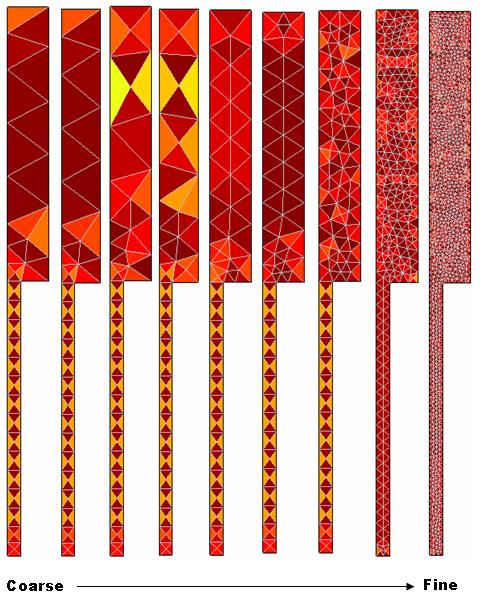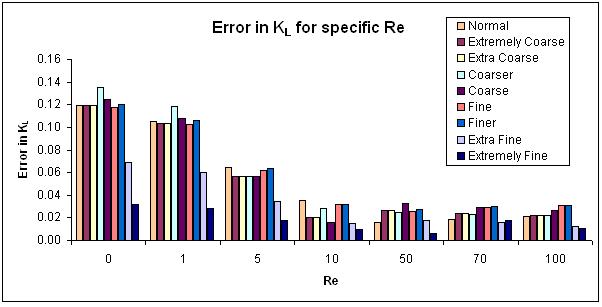Mesh
Refinement Analysis for 3:1 Contraction
The purpose of this project is to investigate the effects
of mesh refinement for a standard 3:1 contraction. More specifically how increasing
mesh refinment (or decrease in mesh element size) correlates to error in excess
pressure drop. Figure 1, to the right shows visually how increased mesh refinement
looks for a 3:1 contraction case. The 9 refinements shown to the right reflect
9 preset mesh refinement settings within COSMOL Multiphysics software package.
Abhi
Banerjee
Figure
2, below, shows the error in the excess pressure drop distribution for different
refinement presets for different Reynolds numbers. Notice for small Reynolds
numbers the error difference between a fine mesh with a normal mesh is quite
dramatic. However, for a higher Reynolds number the difference in error associated
with the excess pressure drop is much lower.
Figure
1. Spectrum of mesh refinment presets in COSMOL Multiphysics software.
Figure
2 . Error distribution of excessive pressure drop for a 3:1 contraction
for different Reynolds numbers.
Figure
3 . Error in KL versus CPU time for different mesh refinment presets.
Figure
3, below is a graph of the CPU time versus error in excess pressure drop. As
one can see between figures 2 and 3, we see that for lower Reynolds numbers
there is a significant difference in the amoung of error between a normal refinement
and extremely fine refinement settings. This difference is much smaller for
higher Reynolds numbers.
Through
this research we found when a finer refinment mesh is required and when a normal
refinement is good enough. Although this analysis was done on a simple case
with a simple geometry. We expect the same trends to hold for more complex geometries
presented in COSMOL Multiphysics. For a more detailed calculations and discussion
of this research please refer to the formal
paper.
Micro06_home



